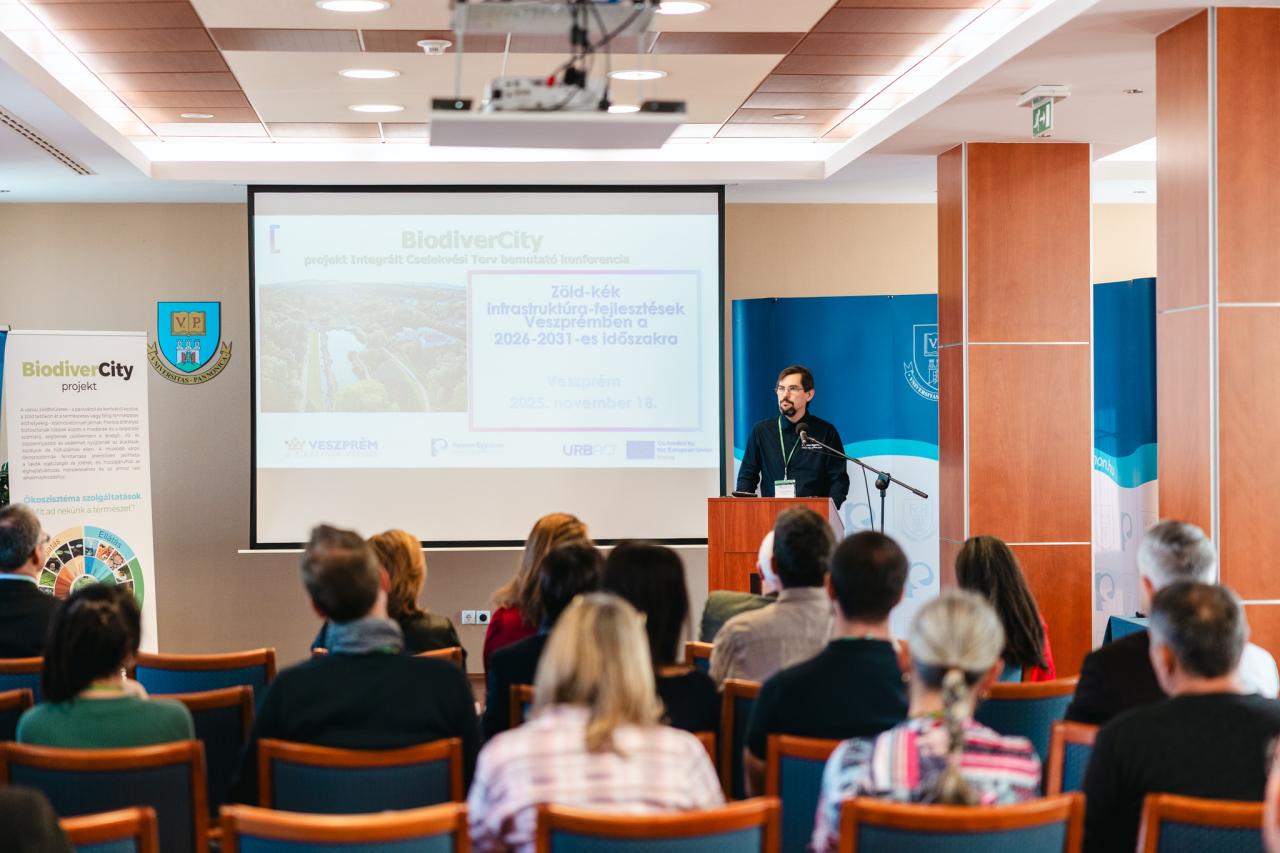Expert presentations on climate adaptation, water management and urban ecology
The morning continued with a diverse set of thematic presentations drawn from the IAP’s priority areas. Speakers explored ten years of research into Veszprém’s wildflower meadows, the effects of climate change on urban tree populations, the role of therapeutic gardens in social sustainability, and the opportunities and challenges of sponge-city solutions. Contributions also addressed rainwater retention in Veszprém, as well as the integration of the IAP into the city’s strategic development frameworks.
Participants also had the chance to taste honey produced through Veszprém’s pilot urban beekeeping initiative, an action now confirmed as feasible and soon to be expanded with permanent hives across the city.

Showcasing the IAP: green-blue infrastructure for 2026–2031
The conference introduced the full structure of Veszprém’s Integrated Action Plan for 2026–2031, created through an extensive participatory process involving municipal departments, the University of Pannonia, NGOs, utilities and local stakeholders. The plan outlines eight flagship measures, ranging from climate-adaptive grasslands and urban beekeeping to rain gardens, micro-forests, community composting, integrated urban water management and therapeutic gardens. A new Citizen Green Office will provide hands-on support to residents, offering seeds, composting guidance and expert advice on nature-based solutions.
The plan directly addresses local ecological challenges such as water scarcity, invasive species, conflicts between parking and green spaces, and the need for long-term climate-resilient vegetation. It also builds on Veszprém’s “Wildflower City” programme, which recently received the prestigious URBACT European Good Practice label.
A guided BiodiverCity Walk through Veszprém’s green spaces
Following the programme, participants joined a guided walk led by municipal and academic experts. The route showcased recent green infrastructure developments, the ethnobotanical garden, Veszprém’s first public rain garden, bird-nesting research sites, climate-adaptive campus green areas and the ecological functions of deadwood in urban habitats. The walk concluded at the ActiCity Movement Arts Centre, where visitors saw how landscaping and species selection reflect climate-resilient design principles.

A milestone for ecological urban planning in Veszprém
Speakers emphasised that nature-based solutions and ecological design must become central components of urban governance. As Sustainability Commissioner Áron Kovács noted, “Only those cities that take environmental sustainability seriously will remain liveable in the future.” He highlighted the voluntary involvement of local stakeholders in installing Veszprém’s first public rain garden as a strong example of this shared commitment.
The conference closed with reflections on how the project has shaped new long-term ambitions for the city, including plans to create a full-time biodiversity expert position within the municipality to oversee implementation, monitoring and stakeholder engagement.
The event demonstrated the collective enthusiasm and expertise that have driven the BiodiverCity project in Veszprém. Discussions continued during the breaks and throughout the afternoon walk, underscoring the strong local momentum for ecological urban development.


